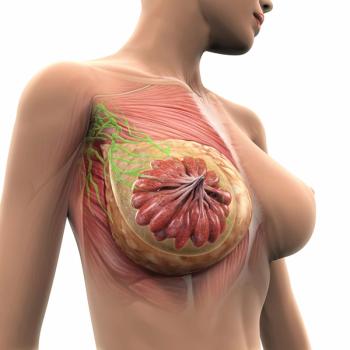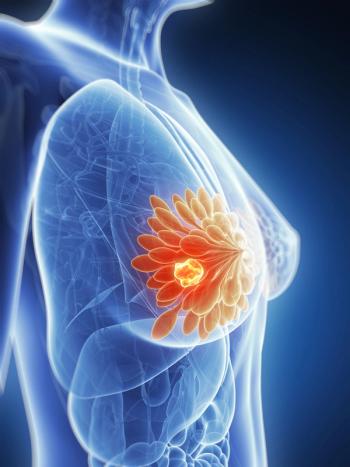
Promising Efficacy Seen With Addition of Orelabrutinib to R-CHOP in Non-GCB DLBCL
In patients with non-germinal center B cell–like diffuse large B-cell lymphoma, the combination of orelabrutinib plus R-CHOP revealed an overall response rate of 86.4%.
Data presented at the
Findings were presented by Mingyue Wang, MD, hematologist and oncologist at Guangxi Medical University Cancer Hospital, Nanning, China and showed that along with its impressive efficacy, the toxicity of orelabrutinib plus R-CHOP was acceptable.
Orelabrutinib is a new oral covalent Bruton’s tyrosine kinase (BTK) inhibitor that targets B-cell malignancies and autoimmune diseases.
Because of the poor prognosis of patients with non-GCB DLBCL, especially for those with extranodal disease, this phase 2 study (NCT05498259) was initiated to examine the efficacy and safety of orelabrutinib in addition to R-CHOP in this patient population.
Enrollment was open to patients aged 18 to 75 years of age with immunohistochemistry confirmed non-GCB DLBCL with PET-CT confirmed extranodal invasion. Patients were required to have at least 1 measurable lesion, measurable lymph nodes or masses of at least 15 mm, an ECOG performance status 0-2, lymphoma International Prognostic Score of 2 or greater, a life expectancy of 6 months or longer, and adequate organ and marrow function.
Patients received standard R-CHOP with oral orelabrutinib at 150 mg a day on a 21-day cycle for 6 cycles.
The primary end point of the study was overall response rate (ORR), including mini response rate defined as the rate of patients who achieved ≥25% tumor reduction in the first 21 days, and complete response rate. Secondary end points included progression-free survival (PFS), overall survival (OS), and safety.
A total of 22 patients were enrolled with a median age of 52 years of age (range, 21-72). Eight patients were male (36.3%), 11 cases (50.0%) with International Prognostic Indexbetween 3 and 5, 12 cases (54.5%) with double expressor DLBCL, 3 patients (13.6%) with a TP53 mutation, and 19 cases with stage IV disease (86.4%). The most common extranodal sites (n = 22) were the pericardium or pleura or peritoneum (45.5%), gastrointestinal tract (27.3%), and kidney or adrenal gland (22.7%).
Findings revealed that at a median follow-up of 11 months, the overall response rate in all 22 patients was 86.4% with a complete response (CR) rate of 77.3% having occurred in 17 patients. Additionally progressive disease occurred in 13.6% of patients (n = 3).
For those with double expressor DLBCL, the ORR was 75.0% (n = 9). All 9 patients had a CR and 3 patients (25%) had progressive disease.
Although the median PFS for all patients was not reached, the 5-month PFS rate was 90.9% (95% CI, 79.6-100). All patients enrolled in the trial survived, and regarding safety, serious adverse events included 3 cases of febrile neutropenia (13.6%), 2 cases of pneumonia (9.1%), and 1 atrial flutter (4.5%).
“The efficacy of orelabrutinib plus R-CHOP for non-GCB DLBCL with extranodal disease is impressive in this single center clinical practice and the toxicity is acceptable,” said Wang in the presentation.
Reference
Wang M, Ke Q, Li Z, et al. Orelabrutinib plus RCHOP for previously untreated non-germinal center b cell-like (GCB) diffuse large b cell lymphoma (DLBCL) patients with extranodal disease. Ann Oncol. 2022;33(suppl 7):627MO. doi:10.1016/annonc/annonc1055.
Newsletter
Stay up to date on recent advances in the multidisciplinary approach to cancer.





















































































